In Development this week (Vol. 143, Issue 7)
Posted by Seema Grewal, on 5 April 2016
Here are the highlights from the current issue of Development:
TUBB5 analysis yields insights into microcephaly
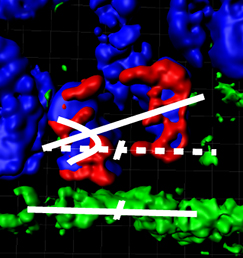 Mutations affecting tubulin genes have been implicated in a range of human neurological disorders but very little is known about the cellular mechanisms that underlie these disorders. Now, on p. 1126, David Keays and co-workers examine how a mutation in the murine homologue of TUBB5 leads to a disease phenotype. Using two new mouse models – a conditional Tubb5 E401K knock-in (which mimics a human mutation) and a conditional knockout – they reveal that Tubb5 perturbation causes a decrease in brain size in mice, mimicking the microcephaly phenotype described in patients with TUBB5 mutations. Although the laminar structure of the cortex is largely maintained in mutants, a loss of upper neuronal layers is seen. The authors further reveal that Tubb5 perturbation causes defects in mitotic progression that lead to massive apoptosis in the brain; in line with this, increased levels of the apoptotic driver p53 are observed. Finally, the researchers note that ectopic progenitors and spindle orientation defects are observed in Tubb5 E401K mutants but not knockout mice, suggesting that the E401K mutation acts via a complex mechanism. Together, these results provide key insights into the pathology underlying tubulin-associated diseases.
Mutations affecting tubulin genes have been implicated in a range of human neurological disorders but very little is known about the cellular mechanisms that underlie these disorders. Now, on p. 1126, David Keays and co-workers examine how a mutation in the murine homologue of TUBB5 leads to a disease phenotype. Using two new mouse models – a conditional Tubb5 E401K knock-in (which mimics a human mutation) and a conditional knockout – they reveal that Tubb5 perturbation causes a decrease in brain size in mice, mimicking the microcephaly phenotype described in patients with TUBB5 mutations. Although the laminar structure of the cortex is largely maintained in mutants, a loss of upper neuronal layers is seen. The authors further reveal that Tubb5 perturbation causes defects in mitotic progression that lead to massive apoptosis in the brain; in line with this, increased levels of the apoptotic driver p53 are observed. Finally, the researchers note that ectopic progenitors and spindle orientation defects are observed in Tubb5 E401K mutants but not knockout mice, suggesting that the E401K mutation acts via a complex mechanism. Together, these results provide key insights into the pathology underlying tubulin-associated diseases.
A new look for the tumour protein Tctp
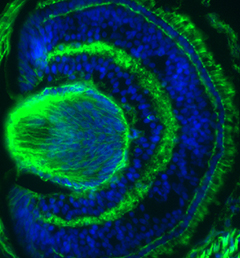
Tctp is an evolutionarily conserved protein that has been implicated in cell growth and cancer. Transcripts encoding Tctp are known to be enriched within the axonal compartment of many neurons but how they function in this context is unclear. Here, motivated by the parallels between axon growth and cancer cell invasion, Christine Holt and colleagues investigate the role of Tctp in the Xenopus visual system (p. 1134). They first report that Tctp is expressed throughout the retina, including in retinal ganglion cell (RGC) axons. Using morpholino-mediated knockdown, the researchers reveal that Tctp is required for establishing correct axonal projections in the retina; RGC axons in morphants are shorter and grow in a dispersed fashion as a result of impaired axon extension. Tctp-depleted axons also exhibit a reduction in mitochondrial density and compromised axonal mitochondrial function. Finally, the authors demonstrate that axonal Tctp interacts with Bcl2-related myeloid cell leukaemia 1 (Mcl1) and that its pro-survival activity is required for normal axon development. In summary, these findings highlight a novel function for Tctp, suggesting that it supports axon development in the visual system via regulation of pro-survival signalling and axonal mitochondrial homeostasis.
Growth patterns during liver development
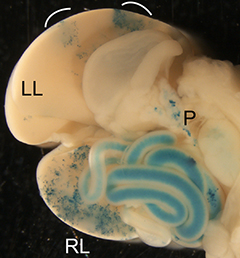 The liver is a vital organ, and understanding how it develops can provide key insights into liver disorders and regeneration. Here, Mary Weiss, Margaret Buckingham and colleagues use a retrospective clonal approach to provide an in-depth analysis of cell behaviour during liver development in mice (p. 1149). Using an Hnf4a/laacZ transgene, which produces β-galactosidase in cells in which a rare recombination event generates a functional lacZ reporter when the liver gene Hnf4a is expressed, two types of clone are identified. The first type, of which there are many, exhibits a limited number of cell divisions and is calculated to arise between E8.5 and E13.5, during a rapid growth phase. The second type, termed a ‘mega-clone’, is larger and is thought to arise from multipotent founder cells at an earlier stage; these generate descendants that also contribute to the pancreas and intestine. The authors note that clonally-related cells form distinct spots or stripes, rather than being dispersed, suggesting that growth is orientated and cohesive. Finally, they reveal that some mega-clones populate just one side of the liver, indicating the existence of a left-right chirality that most likely occurs after liver fate has been established. These observations yield novel insights into the cell behaviours that underlie liver morphogenesis and contribute to liver function.
The liver is a vital organ, and understanding how it develops can provide key insights into liver disorders and regeneration. Here, Mary Weiss, Margaret Buckingham and colleagues use a retrospective clonal approach to provide an in-depth analysis of cell behaviour during liver development in mice (p. 1149). Using an Hnf4a/laacZ transgene, which produces β-galactosidase in cells in which a rare recombination event generates a functional lacZ reporter when the liver gene Hnf4a is expressed, two types of clone are identified. The first type, of which there are many, exhibits a limited number of cell divisions and is calculated to arise between E8.5 and E13.5, during a rapid growth phase. The second type, termed a ‘mega-clone’, is larger and is thought to arise from multipotent founder cells at an earlier stage; these generate descendants that also contribute to the pancreas and intestine. The authors note that clonally-related cells form distinct spots or stripes, rather than being dispersed, suggesting that growth is orientated and cohesive. Finally, they reveal that some mega-clones populate just one side of the liver, indicating the existence of a left-right chirality that most likely occurs after liver fate has been established. These observations yield novel insights into the cell behaviours that underlie liver morphogenesis and contribute to liver function.
PLUS…
Lineage specification in the mouse preimplantation embryo
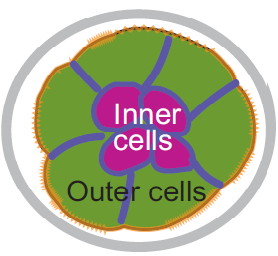 Chazaud and Yamanaka discuss recent advances in live imaging, computational modelling and single cell analyses that provide insights into how the first three cell lineages of the mouse embryo are generated.
Chazaud and Yamanaka discuss recent advances in live imaging, computational modelling and single cell analyses that provide insights into how the first three cell lineages of the mouse embryo are generated.
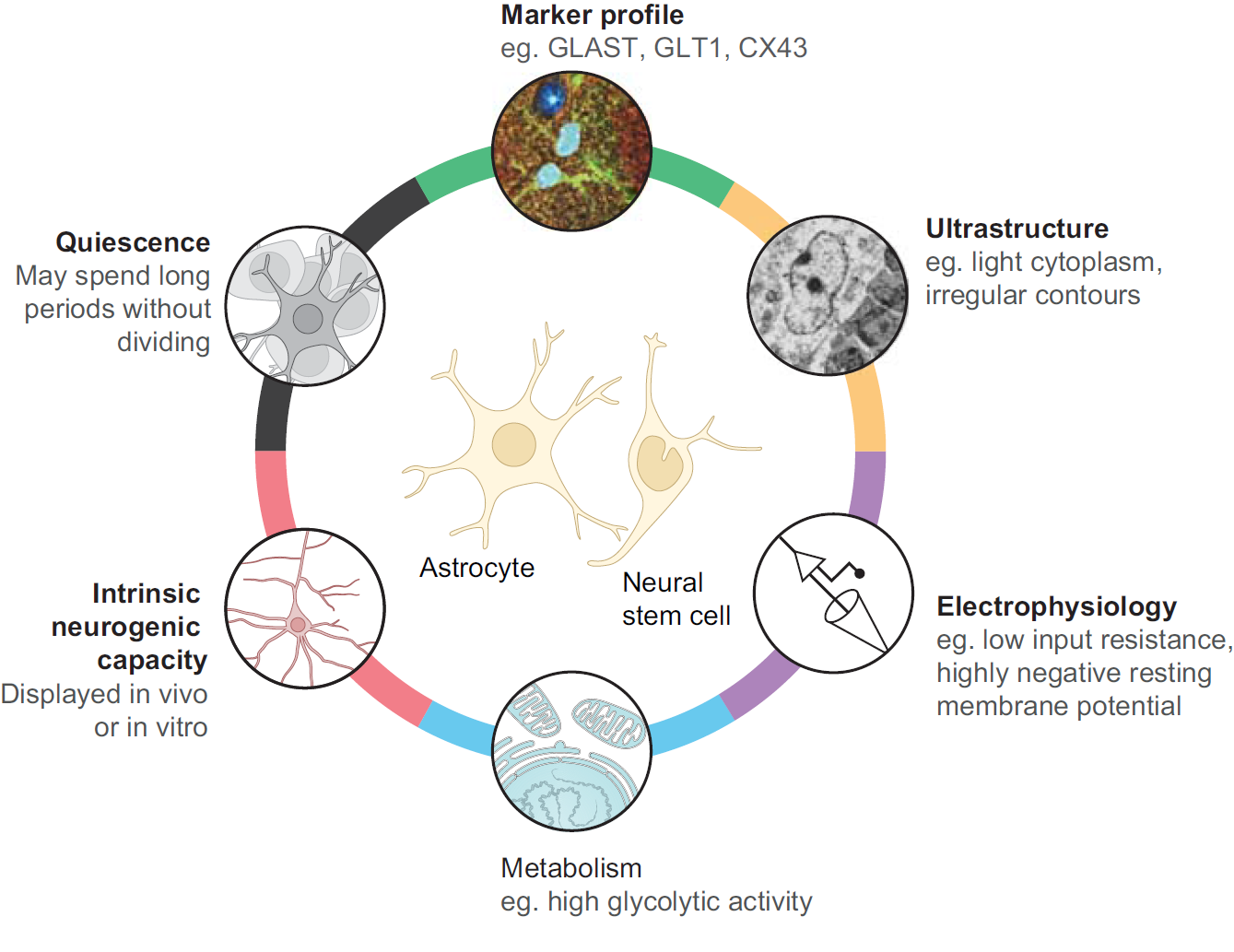 Unlocking the neurogenic potential of astrocytes in different brain regions
Unlocking the neurogenic potential of astrocytes in different brain regions
Magnusson and Frisén discuss the extent to which astrocytes in different brain regions can behave as neural stem cells, and the molecular and environmental factors that either promote or repress such activity.
Interviews with Cheryll Tickle and Abigail Tucker
This year the British Society for Developmental Biology created a new award, the Cheryll Tickle medal, to recognise the outstanding achievements of a female scientist in the field. In this issue we feature an interview with Cheryll Tickle, after whom the medal is named, and with its first winner, craniofacial researcher Abigail Tucker.



 (No Ratings Yet)
(No Ratings Yet)